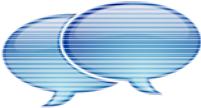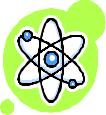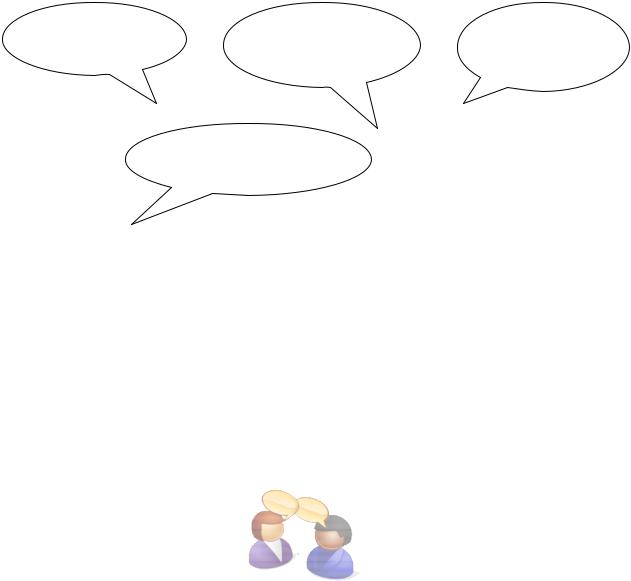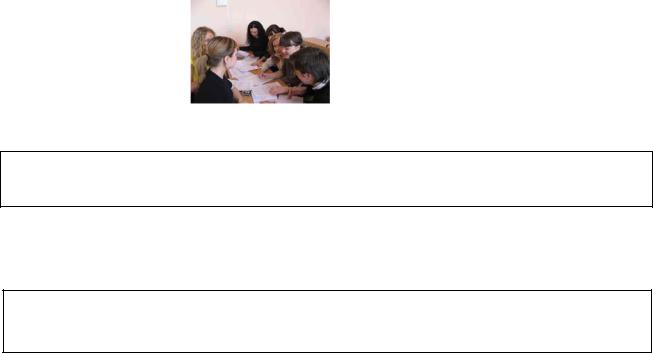
ENGLISH for Study and Work том 1
.pdf
Possible assessment criteria
Here are some points which various tutors have suggested they look for in a report.
•Correct report format with appropriate headings. Material allocated correctly to the headings.
•Your approach to your research. Your ability to define clearly the problem to be tackled, or the purpose of the work. A clear statement of the topic/problem.
•Your ability to interpret work by others, to make personal observations, or to analyse data, and draw conclusions.
•The accuracy with which information has been recorded and the clarity with which it is presented.
•Appropriate and sufficient collection of data.
 Grammar Reference:
Grammar Reference:
Modals for advisability and necessity.
2908976

Unit 6 Writing Technical Reports
Focus on
•reflecting on experience of writing technical reports
•understanding the importance of writing technical reports
•main features and elements of a technical report
•format of a technical report
By the end of the unit you will be aware of:
•what makes an effective technical report
•the major sections of a technical engineering report
•techniques of writing a technical report
•the main features and elements of a detailed technical report
Lead-in
1.Pair-work. Discuss the following questions:
•Do you have any experience in reading and writing technical reports? If so, what sort of reports were they?
•What was the purpose of writing the reports?
2.Exchange and discuss the results of your work with the other pair.
Reading and Speaking
3. Read the text given on the following page and find the answers to the following questions.
•Why is it important for an engineering student to develop good written and communication skills?
•What types of reports are engineers required to write?
2918907

As an engineering student you need to develop good written and communication skills. During the next four or five years at the University, you will learn how to express your thoughts, present a concept for a product or a service and engineering analysis of a problem and its solution, or show your findings from experimental work. Moreover, you will learn how to communicate design ideas by means of engineering drawings or computeraided modeling techniques. Starting right now, it is important to understand that the ability to communicate your solution to a problem is as important as the solution itself. You may spend months on a project, but if you cannot effectively communicate to others, the results of all your efforts may not be understood and appreciated. Most engineers are required to write reports. These reports might be lengthy, detailed, technical reports containing charts, graphs, and engineering drawings, they may take the form of a brief memorandum or executive summary. Some of the more common forms of engineering communication are explained briefly next.
4. Whole-group work. Compare the information from the text with your ideas from 1. Comment on the importance of writing technical reports for engineers.
Determining the types of engineering reports
5.Group-work. Brainstorm the types of technical reports you will be writing in your academic and professional environment. Exchange your ideas with the other group.
6.Pair-work. Match the report types (1 - 5) with their definitions (A - E) and then discuss their main features with your partner.
2928901
1. |
Homework |
A |
This report is a means of communicating to people in top |
|
Presentation |
|
management positions, such as a vice president of a |
|
|
|
company, the findings of a detailed study or a proposal. It |
|
|
|
must be brief and concise. It is generally no more than a few |
|
|
|
pages long. In the report, references may be made to more |
|
|
|
comprehensive reports so that readers can obtain additional |
|
|
|
information if they so desire. |
2. |
Progress |
B |
This report is yet another way of conveying information in a |
|
Report |
|
brief way to interested individuals. Generally, it is under two |
|
|
|
pages in length. The header of the report contains |
|
|
|
information such as the date, who the report is from, to |
|
|
|
whom it is being sent, and a subject line. This is followed by |
|
|
|
the main body. |
3. |
Executive |
C |
Engineering paper is specially formatted for use by engineers |
|
Summary |
|
and engineering students. The paper has three cells on the top |
|
|
|
that may be used to convey such information as course |
|
|
|
number, assignment due date, and your name. A given |
|
|
|
problem may be divided into a "Given" section, a "Find" |
|
|
|
section, and a "Solution" section. |
4. |
Short |
D |
The aim of the report is to communicate the results of your |
|
Memos |
|
project work or experimental investigations. It generally |
|
|
|
contains a set of typical components. |
5. |
Detailed |
E |
These reports are means of communicating to others in an |
|
Technical |
|
organization or to the sponsors of a project how much |
|
Report |
|
progress has been made and which of the main objectives of |
|
|
|
the project have been achieved to date. Based on the total |
|
|
|
time period required for a project, progress reports may be |
written for a period of a week, a month, several months, or a year. The format of the report may be dictated by
a manager in an organization or by the project's sponsors.
2938901

Structuring a technical report
7. Whole-group work. Detailed technical reports dealing with experimental investigations generally contain typical components which are given in the box below. Give your ideas as for the importance of the items and put them into the logical order. Explain your points of view by using phrases:
I believe… |
To my mind.. |
I think… |
In my opinion…
A |
Theory and Analysis |
F |
References |
B |
Conclusions and Recommendations |
G |
Objectives |
C Apparatus and Experimental Procedures |
H |
Data and Results |
|
D |
Appendix |
I |
Title |
E |
Abstract |
J |
Discussion of the Results |
Reading and Discussion
8. Pair-work. Read the information on the opposite page. Do you agree with it? Why? Why not? Give your own ideas about strategies of writing a technical report and discuss them with the partner.
294310

For You to Know: |
Tips for Writing Reports |
It is not sensible to leave all your writing until the end. There is always the possibility that it will take much longer than you anticipate and you will not have enough time. It is wise to begin writing up some aspects of your research as you go along. Remember that you do not have to write your report in the order that it will be read. Often it is easier to start with the method section. Leave the introduction and the abstract to last. The use of a word processor makes it very straightforward to modify and rearrange what you have written as your research progresses and your ideas change. The very process of writing will help your ideas to develop. Last but by no means least, ask someone to proofread your work.
Commenting on strategies of a report production
9.Whole-group work. Think about stages of writing a technical report. What stages are most important? Which of them are most time consuming? Give your reasons.
10.Look at the following stages for writing a report. Analyse them and compare with your answers in 9.
Because a report conveys information, the stages to producing one should logically be organised around the information gathering stage.
Stage 1: Framing the issues and planning
Stage 2: Information gathering (Researching the Project) Stage 3: Analysing the information
Stage 4: Writing the Report
295341
Briefly, the sources you use will be determined by the aims and scope of your report. You may gather data yourself, for example through carrying out interviews or experiments. You will also be looking for relevant secondary data, information that someone else has gathered or produced and that you will find in, for example, books, journals, newspapers, and other reports. Ensure that the information you use is relevant and that you always reference its source.
Follow-up
11.Write ten tips for report production using your own experience.
12.Be ready to make a mini-presentation on framing the issues and planning your report writing. You may use functional phrases for giving an oral presentation given in Part II Self-study Resources.
296345

Unit 7 Writing a Summary
Focus on
•requirements for summaries
•summarizing and its main steps
•writing a summary
By the end of the unit you will:
•be aware of what a summary is
•be aware of the requirements for writing summaries
•understand the order for writing a summary
•have practiced in writing a summary
Lead-in
1.Answer the following questions.
•Have you ever written and/or read any summary (Ukr. розширена анотація, sometimes реферат)?
•What language was it written in?
•Can you describe its peculiarities?
Discussion
2.Group-work. Come up with a definition of a summary.
A summary is …
3.Read the following definition of a summary and compare your definition with the given one.
A summary is a shortened version of a text aimed at giving the most important information of ideas of the text.
4. Comment on the differences between the two versions if any.
2976543
Discussing requirements for summaries
5.Whole-group work. Brainstorm what makes a good summary. Make a list of ideas.
6.Complete the statements with the requirements for writing a summary choosing the best alternative(s).
1.It condenses the source text and offers a balanced coverage of the original.
(a)Concentrate upon (b) Avoid concentrating upon information from the first paragraph of the original text or focus/focusing on interesting details.
2.It is written in (a) your (b) writer’s own words.
3.It (a) does not evaluate (b) evaluates the source text and is written in a generally neutral manner.
4.The (a) first (b) last sentence of the summary contains the name of the author of a summarised text, its title, and the main idea.
5.The summary uses (a) a lot of (b) enough supporting detail and transition device that show the logical relationship of the ideas.
6.The summary is usually between (a) two-thirds, (b) one-third or
(c)one-fourth of its length.
7.Whole-group work. Discuss your answers with your groupmates. Then check them with the right ones in Self-assessment Part II Self-study
Resources.
8.Put the following steps for writing a summary in the best order.
A. Write the first sentence of the summary with the name of the author of a summarized text, its title, and the main idea.
2987654

B.Read the text again highlighting with a marker important information in each section or taking notes. You may also write an outline of the test.
C.Go through the process again making appropriate changes if necessary.
D.Add appropriate linking words (logical connectors) to show the logical relationship of the ideas and to improve the flow of the summary.
E.Skim the original text and think about the author’s purpose and main idea of the text.
F.Decide what key details may be added to support the main point of the text and write them down.
G.Write a one-sentence summary of each section/part of the outline in your own words; avoid any evaluation or comments. Use the words and expressions synonymous to those used by the author of a summarized text.
H.Divide the text into sections, or, if it has subheadings, think about the idea and important information that each section contains.
9.Pair-work. Compare your answers with a partner. Make changes if necessary. Check your answers in Self-assessment Part II Self-study Resources.
Writing a summary 

10. You are going to write a summary of the text “Energy from GHG emissions”. Before writing read the text paying attention to the important ideas discussed in the text.
2998765
